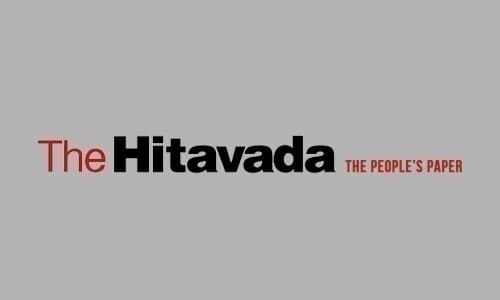N-Threat Worries WHO
| Date :02-Feb-2023 |

By DR ARUN MITRA
THE World Health Organisation (WHO) has recently updated the list of medicines and drugs recommended to treat exposure to radiological and nuclear emergencies. Last time it was done in the year 2007. Maria Neira, the Director of the WHO’s Department of Public Health and Environment has reminded the world about various health emergencies in case of exposure to radiations. The new list has number of such medicines which could be of use in case of a largescale radiation exposure from nuclear war, damage to nuclear power plants to low level exposure from other radiological exposures.
Among the recommended drugs are stable iodine to reduce the exposure of the thyroid to radioactive iodine; chelating agents to reduce radioactive cesium from the body which can form during nuclear fission and cytokines to mitigate damage to the bone marrow. Medicines used for diarrhoea, vomiting, physical injuries are also included in the list with an advice to make them available for use without delay. Damage to DNA causing cancer and other diseases are issue of serious concern as these are potentially fatal effects. Dr Niranjan Bhattacharya from the School of Tropical Medicine, Kolkata, has been advocating use of blood taken from umbilical cord in such emergencies.
As we know, medical science has no effective remedy to the nuclear fallout, but that the WHO has cautioned the world about the danger, is a reflection of its perception that the world is faced with a serious threat of nuclear weapons at present.
The WHO advisory coincides with the report of Doomsday Clock having been moved to 90 seconds or 10 seconds closer than last year when it was at 100 seconds. The Doomsday Clock is a symbol that represents the likelihood of a human-made global catastrophe, in the opinion of the members of the Bulletin of the Atomic Scientists.
The idea was conceived after the 2nd World War. Interestingly, artist Martyl Langsdorf, the wife of Manhattan Project physicist Alexander Langsdorf, designed the clock to warn that time is running out to avert the danger of nuclear catastrophe. The clock was at 7 minutes to midnight in 1947, it was moved to 17 minutes in 1991 when it was thought that the nuclear threat has receded after the end of Cold War. This made the world complacent, but the arms race including the nuclear arms race continued unabated and the clock has been moved to just 1.5 minutes on January 24th, 2023. Needless to say, the danger arising out of the war between Russia and Ukraine poses a grave threat. It does not seem to be coming to an end in the near future. It has instead escalated further with the reports of increased arms supply of arms by the European countries which includes tanks and other equipment to Ukraine. Russia has intensified its attacks on the Ukrainian cities. Ukraine’s infrastructure has suffered gravely.
Dr Barry S Levy, Adjunct Professor of Public Health, Tufts University School of Medicine, in a presentation at an event organised by the International Physicians for the Prevention of Nuclear War (IPPNW) on February 19th, 2022, has warned of serious consequences of conventional war. According to him, in case of war, there is increase in malnutrition, particularly among women and children. There is rise in communicable diseases like diarrhoea, cholera, respiratory diseases, Tuberculosis. Mental disorders like depression, post-traumatic stress disorder and suicides. Reproductive health suffers badly. The non-communicable diseases like heart diseases, cancers, kidney diseases increased. It is unfortunate that despite research and warnings of the catastrophe in the event of nuclear exchange, the countries with nuclear weapons are consciously ignoring the warning. They are out to increase their armaments budget and updating the nuclear weapons system.
Large parts of the world are faced with political instability, growing economic crisis and internal social conflicts coupled with tensions with the neighbours. Unable to solve the problems the Governments in power are very likely to promote nationalist narrative and jingoism which has potential threat of escalation and use of nuclear weapons.
Peace movement around the world has lot of work to do in terms of mobilisation of public opinion and lobbying with the Governments in the nuclear weapons possessing countries. External forces intervening in the conflicts have dangerous connotations. Blatant intervention by the NATO and the US is clearly preventing any solution to the on-going war between Russia and Ukraine which could be very well resolved through negotiations. Ironically, the Non-Aligned movement is nowhere to be seen. Countries which used to lead this movement have taken U-turn in their policies. The G20, a conglomerate of countries with different interests is dominated by those who are involved overtly or covertly in various conflicts around the globe. Role of China increasing military expenditure too is very dubious. The military industrial complex is however making huge profits at the cost of human lives.
Danger is grave, so the task before the peace movements, saner elements in the society and for non-nuclear weapons countries is challenging. However, at a time when the Treaty on the Prohibition of Nuclear Weapons (TPNW) has been passed by the UNO over six years back, opportunity is ripe. (IPA)